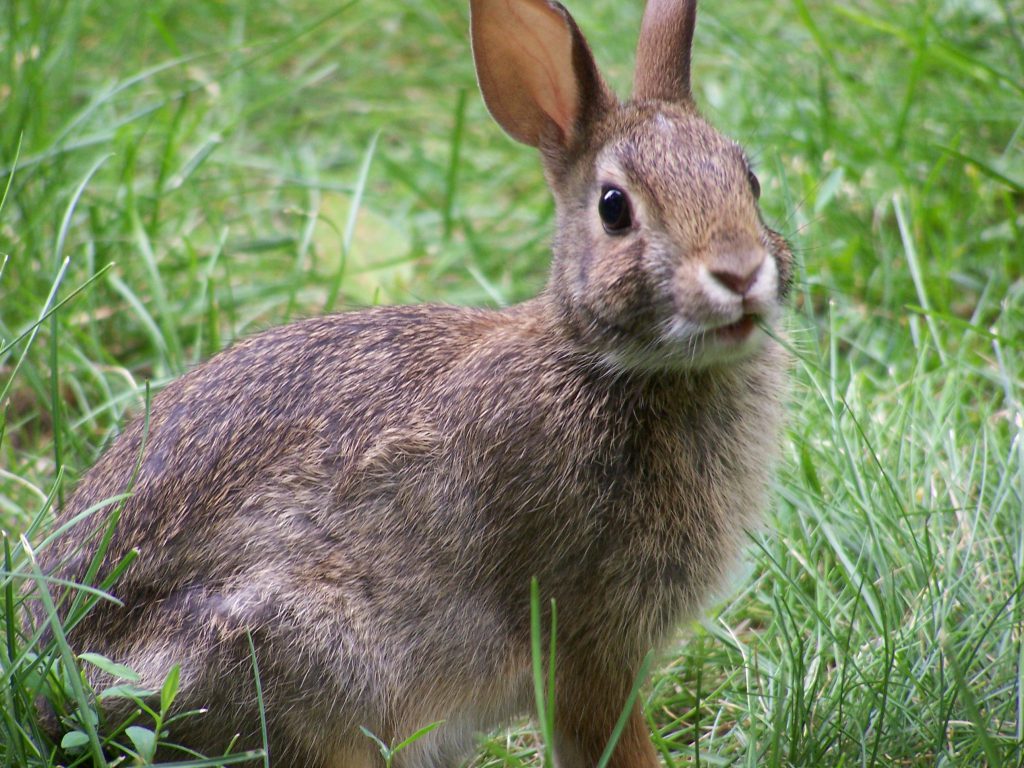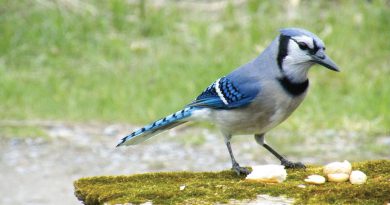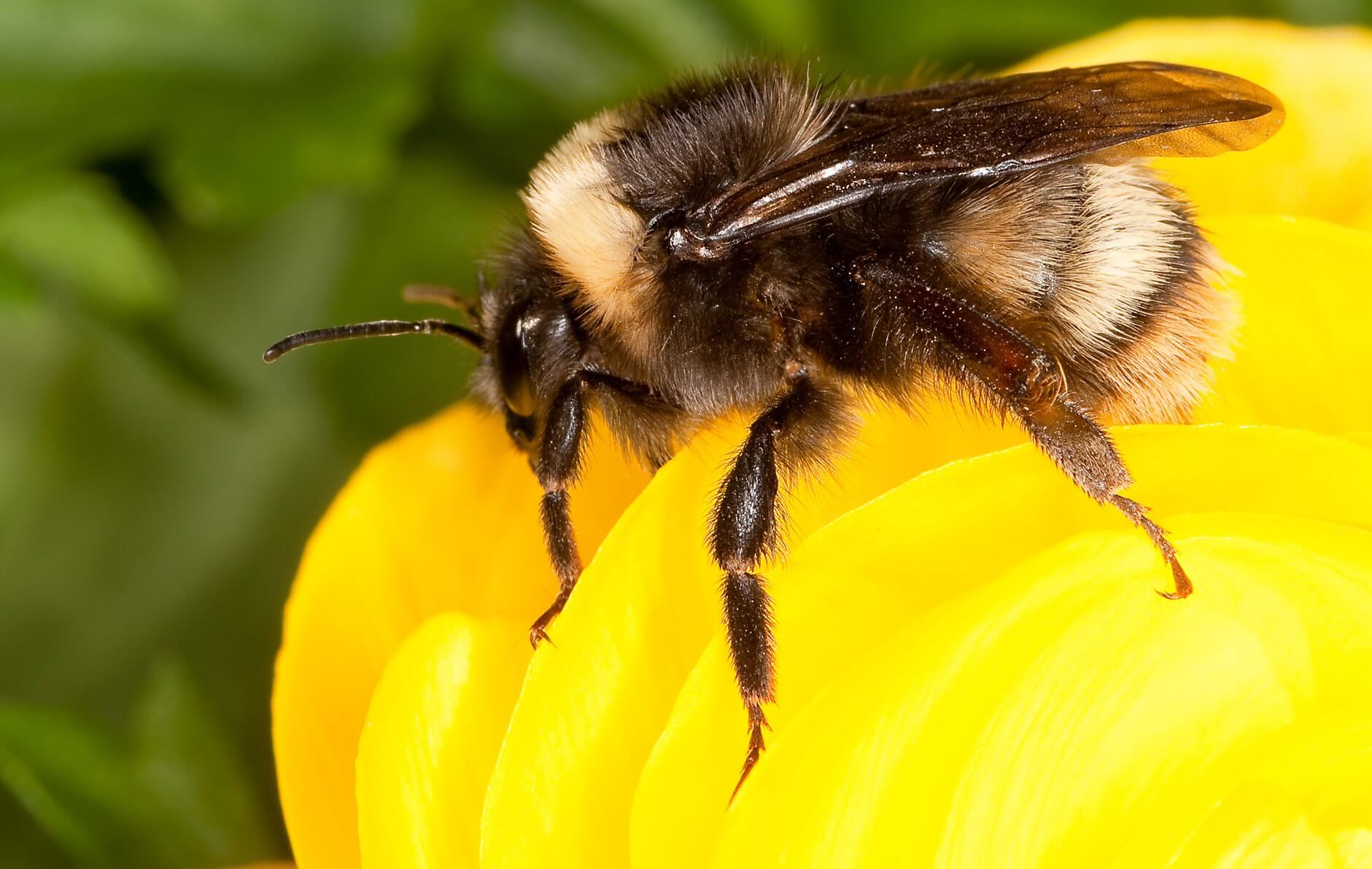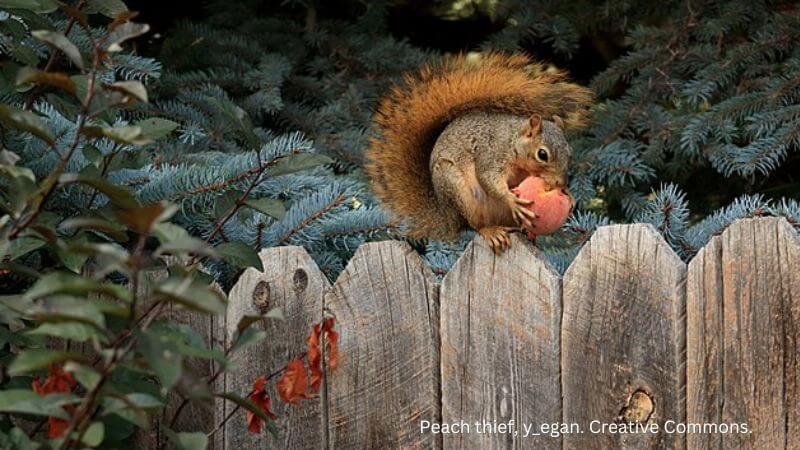Rabbit habits
Rabbit deities appear in mythology as tricksters and fertility symbols. What childless couple wouldn’t want to be able to “breed like rabbits”? In the Chinese zodiac, the rabbit is the fourth sign, representing quiet, reserved and introspective individuals.
In Celtic mythology rabbits were held to be inhabited by underground spirits. They were sacred for their reproductive habits and as symbols of health and prosperity. This likely insoired the ‘lucky rabbit’s foot’ (less lucky for the rabbit).
Mr. Cottontail Rabbit
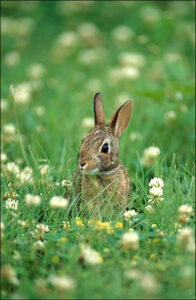
As gardeners, the rabbit has not been so revered. Mr. Cottontail ranges from nuisance to menace. And Mrs. Cottontail’s reproductive habits are notably prolific.
This reputation is well deserved. Mr. Cottontail can’t wait to procreate. He is capable of impregnating the long-suffering female on the same day she gives birth. Moreover, rabbit society lacks incest taboos. Daddy rabbit pursues his daughters at about six months when they reach puberty. He starts thinking about love as early as February. I guess there’s not much to do in those underground burrows after a long cold winter with only the daily foray into the outdoors looking for food.
Where’s mama?
Nor is Mommy rabbit the most devoted or attentive of mothers. True, she will build a nice warm nest of grasses, lined with her own soft fur, where she will give birth after 28 to 32 days of pregnancy. Thereafter, she feeds her 2–7 babies for about five minutes daily, typically after dusk or early morning. In fairness, her milk is very rich and that is all it takes to fill those tiny tummies and she stays away partly to protect the family. Rabbits sweat through the pads of their feet, leaving a conveniently tell-tale trail for predators to follow. The babies, however, have no scent to attract trouble.
The most common rabbit in most gardens is the cottontail. And their babies, called kits, are born hairless and with their eyes closed. These open after 10 day to two weeks, but he kits are not weaned until about eight weeks, even though the kits begin to venture outside the nest at about four weeks.
(Cottontails usually live in underground colonies. If you have an above ground nest, your bunny may be a hare. Hares deliver wide-eyed furry babies in above ground nests and generally live alone.)

During her lifetime, Mrs. Cottontail can have as many as 200 babies, delivered in three to four (and as many as seven!) litters a year. A female cottontail can live to about 10 years, though they usually die before then.
Rabbit senses
Rabbits have well developed senses for staying alive and safe from predators – which is what most of their day is about in the wild. That and eating. Their hearing is especially keen.Those long ears are very like antennae and can turn to capture the slightest sound. They are very attuned to higher pitched sounds. This makes up for their less than perfect eyesight. Although rabbits have a wide field of vision and can actually see behind them, they lack depth perception and actually have a blind spot directly in front of them. This may be why you can walk right up to a rabbit from directly in front and they seem to brazenly ignore you. Fact is, the closer you get, the less they can see.
Their sense of smell is amazing with 100 million scent cells to aid them. They also have about 17,000 to 18,000 taste buds as compared to our 9,000. They love sweet tastes best. In the wild, they can detect toxic plants and stay away from them. They have nerve endings all over their bodies making them very sensitive to touch, and their whiskers are the final weapon in their arsenal of self-protection detection tools. These also aid them in negotiating underground in the dark.
They eat WHAT?
One of their less endearing culinary habits is that of eating their own poop as a defence strategy. In summer their favourite foods are clover, plantain, vetch, aster and various grasses. They like tender annuals in springtime and they seem to adore the first tulips almost as much as I do. As the season wears on, they return to the lawn where they munch on the clover. They have also shown a distinct preference for painted daisies and I wonder if this is because this plant contains pyrethrins, often used to kill insect pests. It might be a good natural anti-flea agent.
In winter, they generally subsist on the bark of willow, alder, aspen and hazelnut. I gave up on trying to grow cistena cherry, which they would pare down to ground level every winter. This past winter, I left some parsley and other herbs hanging over the edges of pots and this seemed to provide a welcome treat during the coldest days. I would see one of the tribe standing on hind legs munching away in midday, safe from dogs and cats in my back yard.
Can you keep them out of the garden?
How do you keep these guys out of the garden? The answer is, you don’t unless you are very determined and vigilant. All the remedies – spicy concoctions, human hair, bone meal and blood meal, garlic or lavender sprays are only effective for a short time after they are applied and certainly not past a good rainfall. If you want to protect your prize shrubs or favourite tulips, the only surefire cure is a wire mesh fence – and some rabbits have been known to chew through those. They don’t care if such habits are bad for their teeth. Their incisors continue to grow throughout their lifespan. And make the fence high – they can jump up to three feet or more! And they can run about 30 kph so chasing doesn’t work.
There are certain plants they are not particularly fond of. But in desperate times, they will eat anything that isn’t aren’t toxic.
You could try scaring them to death. I’m not sure how you would do this. I refuse to turn off the music in the garden, but they seem to like it. Some people set up elaborate water alarm systems that go off when the rabbit approaches. Others install underground systems to send electrical shocks in their feet.
They are creatures of habit and will return to the same place, even if it’s not so pleasant. I don’t think these shock treatments really work.
My strategy is to plant daffodils and foxgloves in gardens I want them stay out of in springtime, and to allow clover to fill the lawn. Somehow we’ve learned to get along. And let’s face, it, they are pretty cute.
Besides, my granddaughter Claire like them. And that’s good enough for me.



